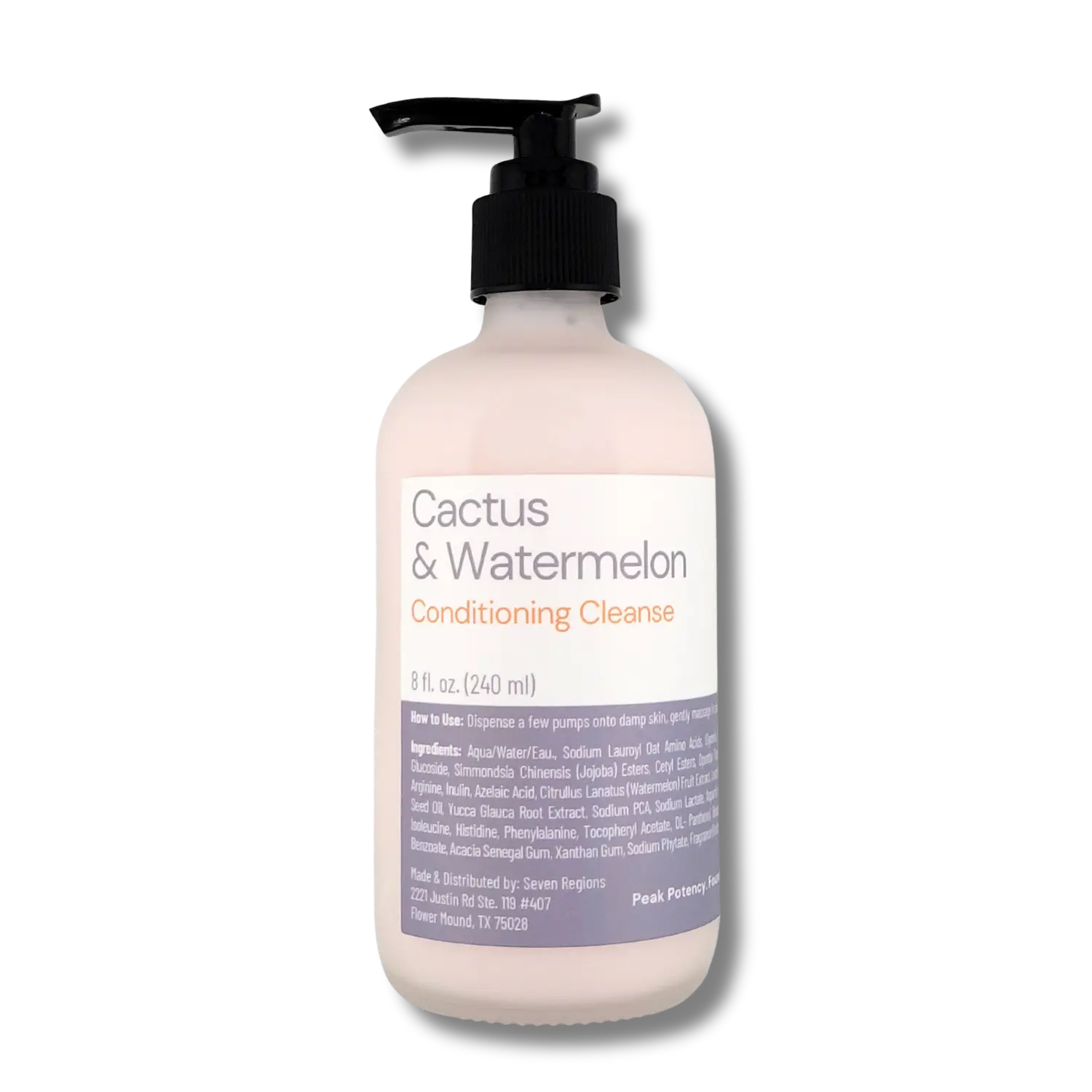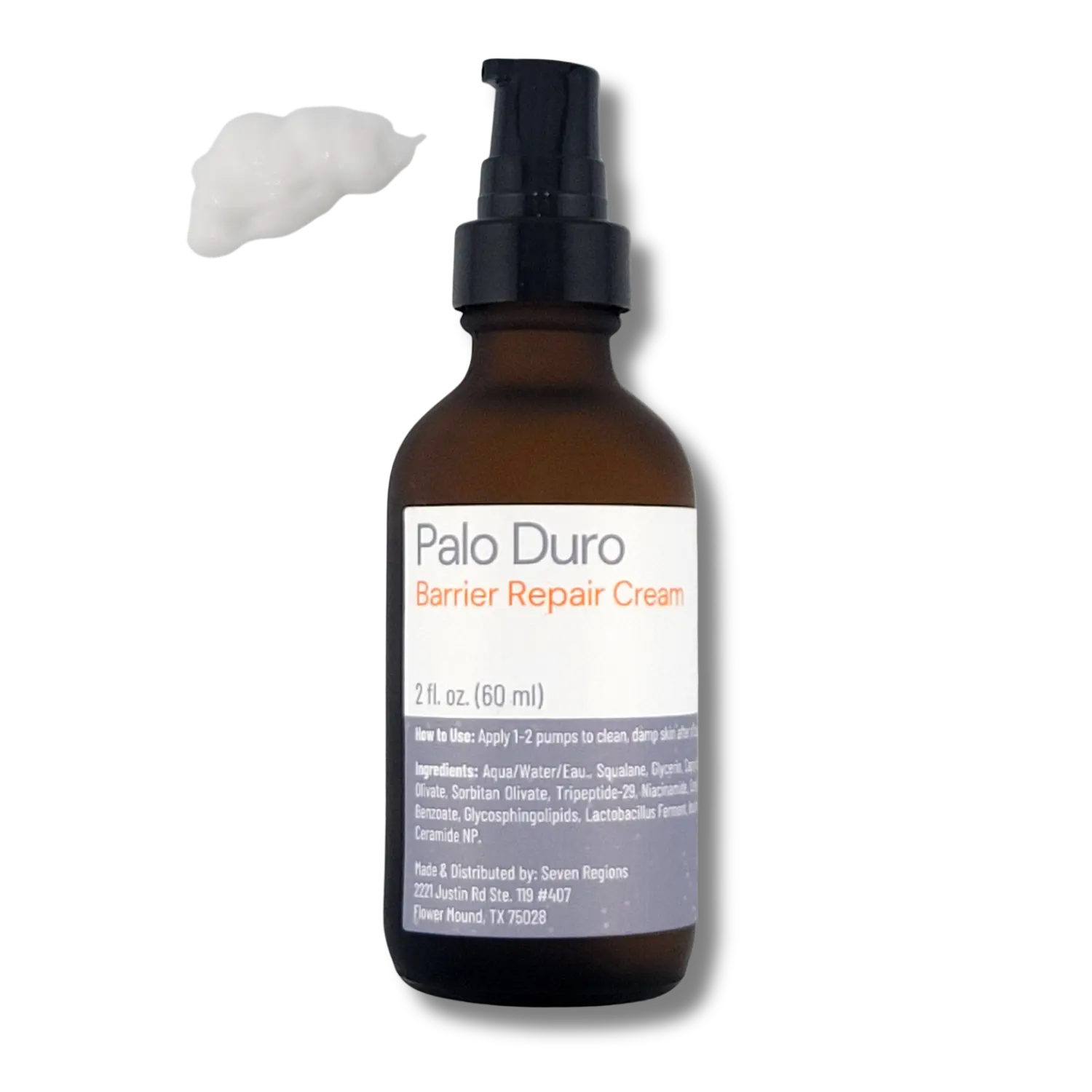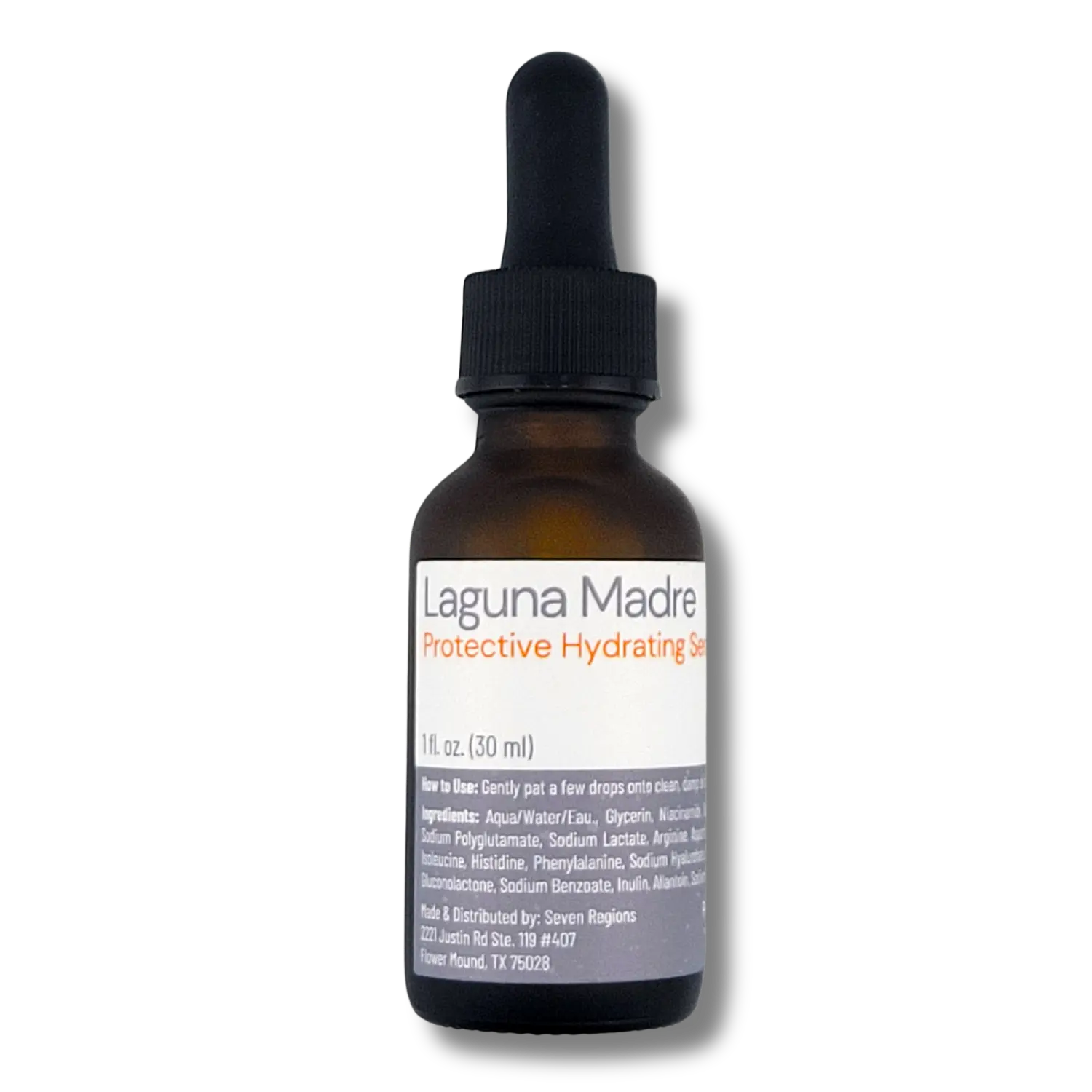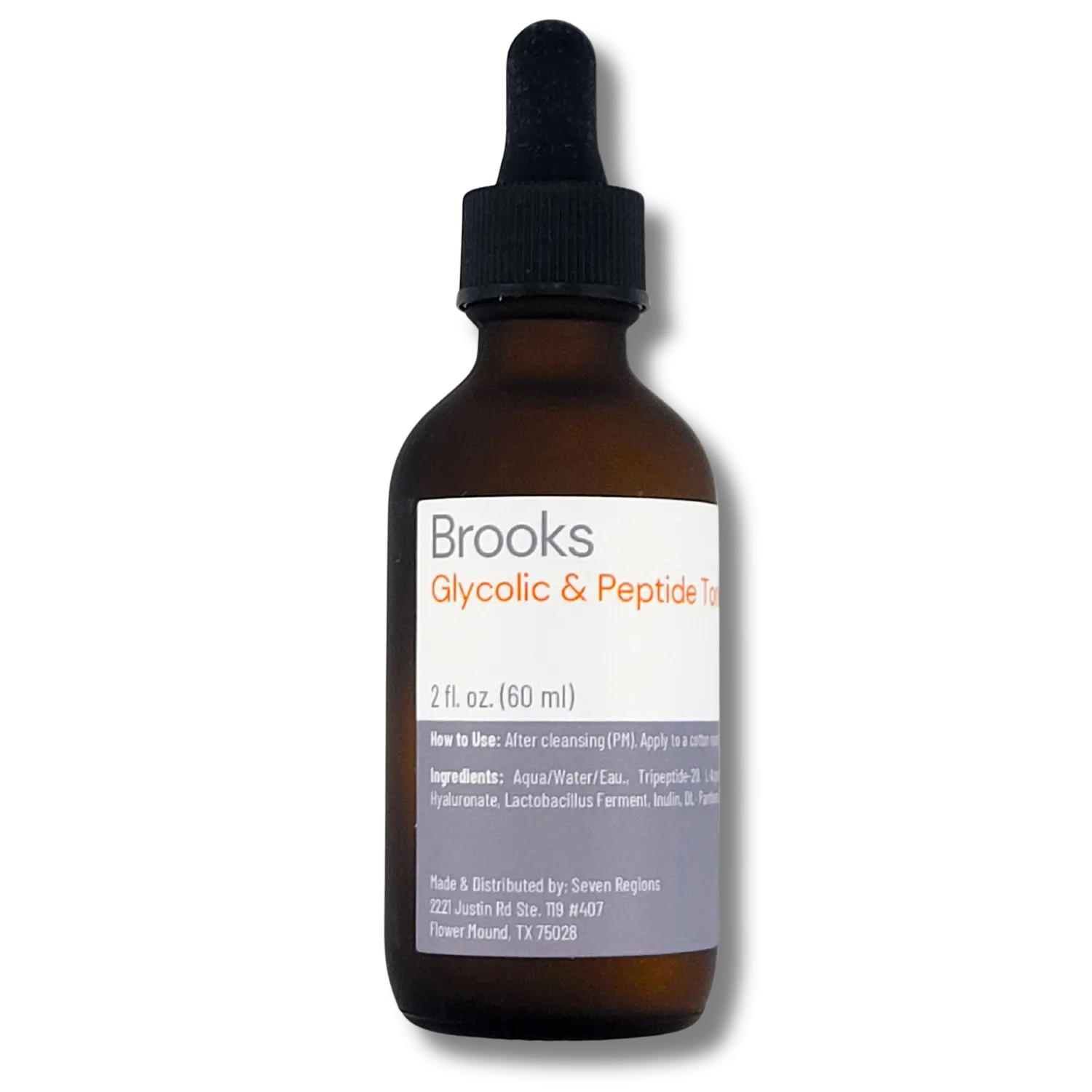Stop Chasing Cures: My Complete Guide to Building a Strong Skin Foundation
- Building a House on Unstable Ground
- Step 1: Identify a Compromised Foundation
- Step 2: The "Foundation-First" Reset (How to Rebuild)
- Step 3: Set Your Goals (Short, Mid, and Long-Term)
- Beyond the Bottle: My Holistic Guide to a Strong Foundation
- The Internal Side: Stress, Diet, and Exercise
- A Note on What Skincare Can (and Can't) Do
Building a House on Unstable Ground
You’ve seen the "miracle" product. The one with the 20% active ingredient that promises to erase all your skin concerns overnight.
So you buy it, use it, and... your skin is red, stinging, and more reactive than ever.
I’ve been there, and I know the frustration. Why do we do this to ourselves? This cycle of "product-hopping" is increasingly common in the fast-paced, fast-delivery world we live in. We are so used to seeing immediate results—whether it's with deliveries or communication—that we’ve been conditioned to expect the same from our bodies.
But skin health doesn't adhere to these human-made niceties. It operates on its own biological timeline.
This pressure is more than just cultural; for me, and for many of us, it's deeply personal. I personally suffer from skin and appearance-related deflation and depression. I am, without a doubt, my own harshest critic. I promise you, nobody can say something about my skin that I haven't already agonized over myself.
This internal conflict is what pushed me for years to enact change faster than what was in the best interest of my skin's natural rhythm. We are, at our core, emotional beings.
I also learned that the stress from expecting too much too soon was actively working against me. My impatience raised my cortisol levels, a stress hormone known to trigger inflammation, breakouts, and—you guessed it—a compromised barrier.
I had to break the cycle.
This entire journey is why I built Seven Regions on a "Foundation-First Philosophy." My own experience proved that actives—even the most powerful ones—only work their magic when applied to a calm, strong, and receptive canvas. Using them on a compromised barrier, as I did for years, is like trying to build a house on unstable ground.
So, how do you build that foundation? Here is my step-by-step guide.
Step 1: Identify a Compromised Foundation
Before you can rebuild, you need to know the signs. Your skin's "foundation" is its barrier (the lipid wall that keeps moisture in and irritants out) and its microbiome (the delicate ecosystem of flora that defends it).
Symptoms of a compromised foundation include:
- Redness and blotchiness
- A feeling of tightness, especially after cleansing
- Stinging or burning when you apply products (even gentle ones)
- Dryness, flakiness, or a rough texture
- Sudden sensitivity to products you used to tolerate
- Increased breakouts or inflammation
If this sounds familiar, your skin is in defense mode. It’s time to stop attacking it and start supporting it.
Step 2: The "Foundation-First" Reset (How to Rebuild)
This is the most crucial phase, and it requires patience. For the next 2-4 weeks (or one to two full skin cycles), your goal is simple: calm, cleanse, and barrier-build.
1. Stop All Actives (The "Calm-Down") For now, you must pause all "treatment" products. This includes:
- Exfoliating acids (AHAs, BHAs like glycolic or salicylic acid)
- Retinoids (Retinol, Tretinoin)
- High-concentration Vitamin C serums
- Harsh scrubs or cleansing brushes
Your skin cannot heal if it's constantly being disrupted.
2. Cleanse with Intention (The "Foundation of the Foundation") This is where so many routines fail. You must stop using stripping, foaming cleansers that leave your skin feeling "squeaky clean." That "squeak" is the sound of your natural barrier oils being washed down the drain.
- What to use instead: A gentle, non-stripping conditioning cleanser. I formulated ours with ingredients like natural saponins (from Yucca Extract) that cleanse impurities without disrupting the skin's barrier. The goal is skin that feels soft, clean, and comfortable—never tight.
3. Rebuild with the Right Ingredients (The "Brick and Mortar") This is how you actively repair the barrier. Your skin needs the building blocks it has lost. Your simplified routine should focus on giving these back.
I recommend looking for:
- Ceramides: These are the "mortar" lipids that hold your skin's "brick" cells together.
- Peptides: These are the "foremen" that signal your skin to rebuild and strengthen itself.
- Niacinamide: A true multi-tasker that calms inflammation and supports ceramide production.
- Prebiotics: To support your skin's microbiome. I love Chicory Root because it selectively nourishes the skin's beneficial flora, helping to rebalance its ecosystem and reduce sensitivity.
How this looks in a routine:
- AM: Rinse with water (or use your gentle cleanser), apply your barrier-repair moisturizer, and finish with a broad-spectrum SPF 30+.
- PM: Cleanse with your gentle cleanser, apply your barrier-repair moisturizer to damp skin, and that's it.
Step 3: Set Your Goals (Short, Mid, and Long-Term)
This is how you get the positive reinforcement you need to stay the course.
- Short-Term Goal (Weeks 2-4): A Calm Foundation. The redness and stinging will subside. Your skin will feel hydrated and comfortable. This is your first "win."
- Mid-Term Goal (Months 1-3): Introduce Actives. Your foundation is strong. Now you can slowly re-introduce one intelligent serum (like our Serum C3 or Serum X) and see visible results without disruption.
- Long-Term Goal (Months 3+): Sustained Resilience. This is the new "normal" for your skin—a state of sustained health and radiance.
Beyond the Bottle: My Holistic Guide to a Strong Foundation
Building your barrier isn't just about what you put on your skin. It’s a 360-degree approach. If you're doing everything right with your products and still struggling, look here.
Your Environment & Application
- Check Your Water: Hard water (high in minerals) can be incredibly harsh on the skin's barrier. A simple shower filter can be a game-changer. Some are quite inexpensive—I’ve found all-in-one shower head and filter systems for around $30.
- Watch the Temp: Try your best not to take scalding hot showers, which strip your skin of its natural oils. Aim for warm, or if you're crazy like me, you can do cold water.
- Press, Don't Rub: For sensitive skin, try the pressing technique. Instead of rubbing in your products, which can cause friction and irritation, gently press them into your skin. Sometimes, it’s enough to help reduce that little bit of irritation.
A Quick Note on Sunscreen Please, find a nice mineral (zinc oxide-based) sunscreen. I personally am still formulating one for Seven Regions. Because I'm a perfectionist, I can tell you it's not quite ready yet. But when it is, you can be sure it will work seamlessly with our products.
The Internal Side: Stress, Diet, and Exercise
- Stress: This is a big one. Are you stressed? Do you have a hobby? Do you allow for "me time" in your daily routine? That cortisol spike I mentioned earlier is a real barrier-wrecker. Do what you can to reduce stress.
- Diet: Here’s the tough one. How’s your diet? Are you getting the nutrition you need to support healthy skin? This is one of the biggest areas where you can have a meaningful impact. Have you ever tried a self-exploration to see what foods irritate you? What causes redness or flushing?
(Exercise is the third piece of this internal-health trifecta. Its benefits for the body and mind are undeniable, but the relationship between exercise, sweat, and skin health is complex. It's so nuanced that it deserves its own dedicated post. Stay tuned for that deep dive.)
My Personal Supplement Stack for Skin Health A quick disclaimer: I am not a doctor, and you should always discuss new supplements with your own doctor who knows your medical history. But from a purely skin health perspective, here are my top picks.
- Fish Oil: Look for quality here. I know too many people that get the cheap, lemon-flavored ones and stop taking them because of the taste. I assure you, there are fish oil supplements out there that have no taste. I personally take 1 gram of Salmon Oil.
- D3 + K2: Most of us spend a lot of time inside. Especially if you're concerned with aging or sun spots, you're told, "Bright Round Circle... bad." (That was my cave man impression.) This is where D3 + K2 supplementation comes in. Being fat-soluble, it will take a bit of time to work in your system, but it's a good one.
- Probiotics: Studies have shown a clear gut-skin correlation. If you have a "leaky gut," it could cause problems for your skin. Probiotics help fill in the gaps and rebuild that gut "foundation," which in turn can help with skin redness—not to mention better digestion of all those nutrients you need. Aim for at least 10 strains and 20 Billion CFUs to start.
- Collagen: This is a long-term plan. Don't expect a miracle overnight. But when it works, it works. I personally take Type I, II, and III. I take UC-II for joint support on an empty stomach in the morning and take Types I & III before bed. I'm an avid lifter, and my joints have never felt better (Skullcrushers used to be a problem, but not anymore). The great thing is that many collagen products also offer additional Biotin and Hyaluronic Acid at meaningful amounts. Just always follow the directed use!
A Note on What Skincare Can (and Can't) Do
Finally, I want to talk about one of the most important parts of this journey: managing our expectations. Part of the reason we get so frustrated is that we've been sold a false bill of goods.
What Skincare Will NOT Do
Skincare is a powerful tool, but it works on the skin's upper layers. It has its limits. For example:
- It will not erase visible capillaries or spider veins. These are damaged blood vessels under the skin. Skincare can help calm the inflammation that leads to redness, but it can't make existing broken capillaries disappear. (For that, you'd need to see a dermatologist for in-office treatments like IPL or Laser therapy).
- It will not "cure" a deep-seated psychological concern. This is the most important boundary we need to talk about.
Skincare can be a beautiful, healing ritual of self-care. It can absolutely help you feel better about yourself. But as I've shared, I know it can also make you feel worse when you're anxiously staring in the mirror, waiting for a "flaw" to disappear.
I learned the hard way that no serum or cream can fix what's going on at a deep psychological level. A product can't give you self-worth. It can't heal anxiety. It can't quiet the inner critic who tells you you're not good enough.
Please, take care of your whole self. Feed your soul. Find that hobby. Talk to someone. Let that inner glow shine through. You can't bottle that effect.
What Skincare CAN and SHOULD Do
Now, with those honest boundaries in place, let's talk about the incredible things a consistent, foundational routine can do. When you work with your skin, here’s what you can realistically expect:
- It SHOULD make your skin feel good. First and foremost,. your daily routine should not be a battle. It SHOULD make your skin feel calm, hydrated, soothed, and comfortable.
- It SHOULD build resilience. This is the core of our philosophy. Your routine SHOULD strengthen your skin's barrier over time, making it less reactive and more able to defend itself from daily stressors.
- It CAN improve clarity and texture. It can absolutely help to smooth rough texture, brighten a dull-looking complexion, and make your skin feel softer.
- It CAN even skin tone. With consistent use, ingredients like Vitamin C and Niacinamide CAN help fade the appearance of post-acne marks and sun spots, leading to a more even tone.
- It CAN soften the signs of aging. By plumping the skin with hydration and supporting its structure (with peptides and collagen), it CAN soften the look of fine lines and make skin look more radiant and healthy.
- It CAN be a ritual of self-love. Above all, it CAN be a quiet, 5-minute ritual, morning and night, where you are mindfully and gently caring for yourself.
That is the true goal. The rest is just a beautiful side effect.





